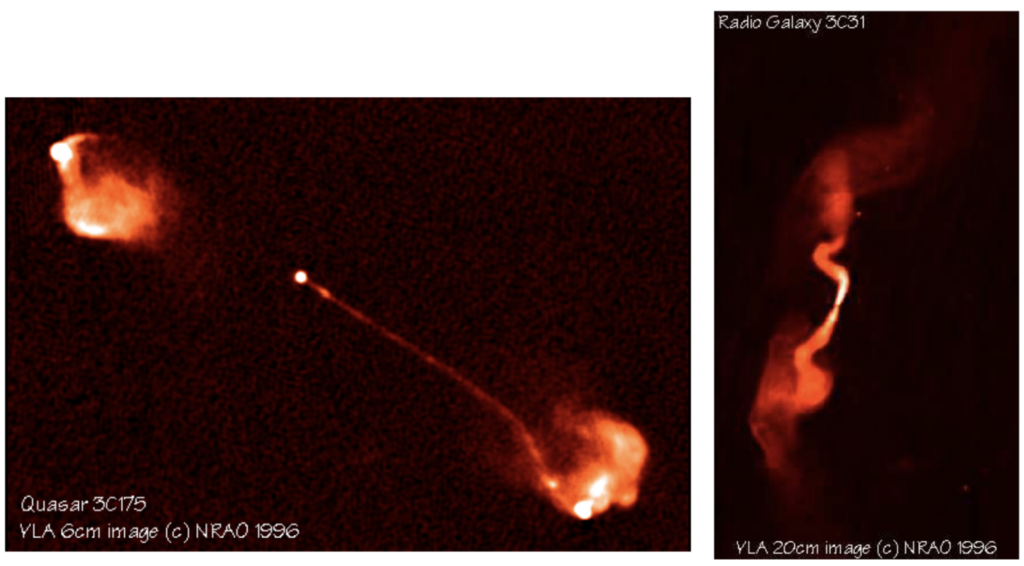After a jet is launched by the central engine, it enters a new phase of propagation in the surrounding medium. Here, another set of physical processes come into play: interaction of the jet with the material in the surrounding medium, expansion of the jet due to its internal pressure, and various instabilities that can change its overall morphology. For example, if the jet is strongly magnetized, magneto-hydrodynamical instabilities known as “kink instabilities” can result in a helical jet shape rather than a straight, collimated outflow.
In the figure on the right, radio observations show that jets from active galactic nuclei (AGN) can assume very different morphologies, which are the signature of the physics of propagation and stability of the jets. JETSET aims to study these processes across jet size scales.
